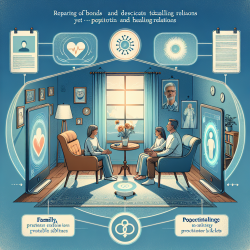Embracing Telemedicine in Pediatric Rheumatology: A Path to Better Outcomes
The COVID-19 pandemic has catalyzed a significant shift in healthcare delivery, prompting many specialties to adopt telemedicine rapidly. Pediatric rheumatology, historically slow to embrace virtual care due to the necessity of physical examinations, has been no exception. However, the recent commentary, "Telemedicine in pediatric rheumatology: this is the time for the community to embrace a new way of clinical practice," provides a comprehensive framework for integrating telemedicine into pediatric rheumatology practice.
Key Insights from the Research
The research underscores the potential of telemedicine to enhance access to care, particularly for families in remote areas. It offers practical guidance on administrative and governance issues, preparation for telemedicine, and the involvement of multidisciplinary teams. The introduction of the Video-pGALS (V-pGALS) examination, a variation of the validated pediatric gait arms legs spine examination (pGALS), is a notable innovation for conducting virtual physical examinations.
Implementing Telemedicine: Practical Tips
- Administrative and Governance Considerations: Ensure compliance with local and international telemedicine regulations. Credentialing and licensing are critical, and patient privacy must be safeguarded through secure platforms.
- Preparation and Execution: Adequate preparation involves equipping families with the necessary technology and information. Select patients for video visits based on their individual needs and the feasibility of virtual assessments.
- Multidisciplinary Involvement: Utilize platforms that allow multiple providers to join a virtual visit, facilitating comprehensive care.
- Teaching and Training: Telemedicine offers unique educational opportunities for trainees, allowing real-time observation and feedback.
Future Directions and Considerations
While telemedicine offers numerous advantages, including increased access and reduced travel, challenges remain. These include the potential for missed subtle exam findings, the need for in-person visits for complex cases, and technological barriers. Addressing these limitations is crucial for the widespread adoption of telemedicine in routine practice.
Future research should focus on validating virtual examination techniques like V-pGALS and assessing the overall quality of care delivered through telemedicine. The integration of telemedicine into pediatric rheumatology could significantly improve access to care and outcomes for children, especially in underserved regions.
To read the original research paper, please follow this link: Telemedicine in pediatric rheumatology: this is the time for the community to embrace a new way of clinical practice.










